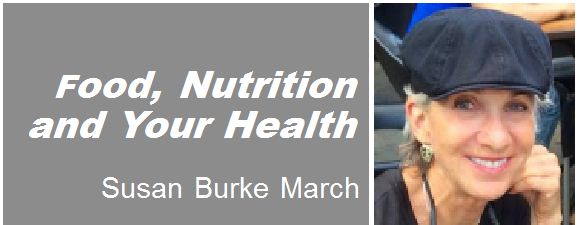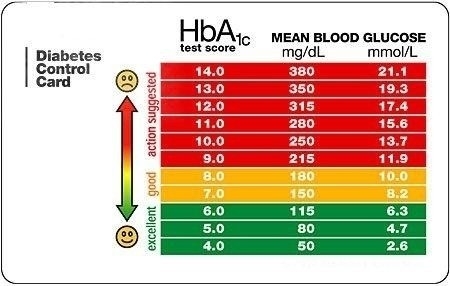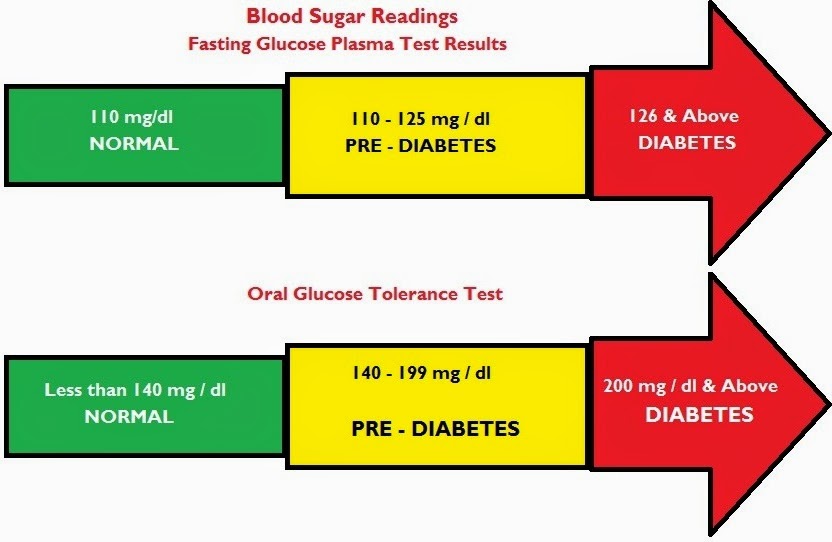What’s ‘normal’ anyway? Body temperature, blood pressure, and blood sugar
Body Temperature. Have you ever wondered how 98.6° Fahrenheit or 37° Centigrade became “normal” body temperature? In the 1850s, a German physician named Carl Wunderlich collected data on 25,000 patients, taking their temperature multiple times. Wunderlich was the first to show how the body temperature fluctuates naturally  throughout the day and night, and he was the first to set the threshold for fever (any temperature above 100.4 F/38 C).
throughout the day and night, and he was the first to set the threshold for fever (any temperature above 100.4 F/38 C).
But Wunderlich’s scientific method challenged one very contemporary creative thinker. Philip Mackowiak, a doctor of internal medicine and vice chairman of medicine and medical historian at the University of Maryland. Mackowiak was intrigued by clinical thermometry or the measurement of body temperature. He was able to obtain one of Wunderlich’s original thermometers.
To make a fun story short (and you can listen to the entire podcast on Freakonomics here), it turns out that Wunderlich only measured armpit (axillary) temperatures — today we know that the most accurate measurements are by mouth, or even better, rectally. The thermometer was unwieldy and most importantly, it was non-registering, meaning it has to be read while in place (you can imagine how uncomfortable that would be if your wife or husband had to assist you in a rectal reading).
Wondering about the historical accuracy of “normal,” Mackowiak set up his own experiment. He learned that a person’s temperature is “almost like a fingerprint,” unique to the individual and found the actual “normal” temperature to be 98.2 F (36.7 C) degrees. In addition, body temperature varies from one person to another. In women, it increases with ovulation and during the menstrual cycle. During vigorous exercise, temperature increases.
 Seattle Children’s Hospital says that many parents have “fever phobia” and in fact, fevers may be harmless and often helpful. They note that fevers turn on the body’s immune system and help the body fight infection. Read more here.
Seattle Children’s Hospital says that many parents have “fever phobia” and in fact, fevers may be harmless and often helpful. They note that fevers turn on the body’s immune system and help the body fight infection. Read more here.
There’s no one “normal” temperature, but a range of temperatures. My “normal” temperature is typically 96.8 F/36 C. What’s yours?
Blood Pressure
There are many myths associated with high blood pressure or hypertension. The most important and insidious is that you will “feel” high blood pressure. In fact, most people with hypertension don’t have any symptoms. Unfortunately, often the first symptom is a stroke or even death.
If you do have symptoms like headache, nosebleeds or blurry vision, it can mean your hypertension has reached “severe and possibly life-threatening levels” according to Dr. Daniel Pohlman, a primary care doctor at Rush University Medical Center.
The only way to know is to check your blood pressure regularly. And although the risk increases with age, even children can develop hypertension and should be checked routinely, beginning at age three.
Measuring blood pressure needs to be done correctly. As reported in Nutrition Action, physician and editor of the medical journal Blood Pressure Monitoring William B. White advises that blood pressure is measured incorrectly about 50% of the time.
Common mistakes when measuring blood pressure:
– After consuming caffeine, which temporarily raises pressure
– Within 30 minutes of smoking — raises blood pressure
– If your bladder is full — raises pressure
– Within 30 minutes of aerobic exercise such as jogging or even brisk walking — temporarily lowers pressure
– Sitting on an exam table or chair without back support — can raise diastolic (the lower number) pressure
– Sitting with legs dangling or crossed — raises pressure (keep your feet flat on the floor)
– With your arm above or below heart level. The person measuring your arm should be supporting your arm, not you
– Don’t speak — stay calm, because even casual conversation can raise pressure
Most importantly, before a diagnosis of hypertension or prehypertension, your blood pressure should be measured at least twice on at least two separate occasions, with good technique both times. Three measurements averaged is even better.
Two numbers represent blood pressure. The higher (systolic) number shows the pressure while the heart is beating. The lower (diastolic) numbers represent the pressure when the heart is resting between beats. According to Blood Pressure UK, ideally, we should all have a blood pressure below 120 over 80 (120/80). At this level, we have a much lower risk of heart disease or stroke. If it’s more than 120/80 and less than 140/90 they still call it “normal” but say it’s higher than ideal.
One thing that can definitely raise your blood pressure is YOU! You could be like the 20 percent or more of patients who have “white coat syndrome” and your blood pressure surges when measured in a clinical setting like the doctor’s office. The Harvard Health Letter reports that blood pressure changes day-to-day and hour-to-hour, even minute-to-minute, but monitoring it daily can help control it. Something about self-monitoring is helpful.
‘White coat syndrome’ could have consequences, prompting your physician to recommend medication unnecessarily. As reported in June 2019 Berkeley Wellness Letter, to address this problem, the American Heart Association (AHA) released guidelines about the proper measurement of blood pressure, last updated back in 2005. A change in the guidelines is a new emphasis on automated office blood pressure (AOBP) measurement, preferably unattended. The patient, after resting for a few minutes, is hooked up to an electric monitor that measures BP three times, and averages the results.
Although the U.S. has been slow to adopt these guidelines, forty percent of Canadian family doctors use it routinely. Let’s hope this proactive practice makes it to Ecuador and Cuenca soon!
Click here for a video from MayoClinic.org demonstrating the correct way to check your own blood pressure.
Your diet (and your weight) can improve your blood pressure. As advised in Heart.org (American Heart Association), eating potassium-rich foods, especially fresh fruits and vegetables, helps eliminate excess sodium through the urine. Potassium helps ease tension in your blood vessel walls, which helps further lower blood pressure. And as reported in Stanford Health Care, your weight can definitely increase your blood pressure. Additional fat tissue in the body needs oxygen and nutrients in order to live, which requires the blood vessels to circulate more blood to the fat tissue. This increases the workload of the heart because it must pump more blood through additional blood vessels. The more circulating blood also means more pressure on the artery walls. Higher pressure on the artery walls increases the blood pressure. In addition, extra weight can raise the heart rate and reduce the body’s ability to transport blood through the vessels.
Blood Glucose
Although people can live healthfully with diabetes, chronic high blood glucose (or blood sugar) is a primary risk factor for development of diabetes complications — damage to nerves can lead to painful neuropathy, diabetic retinopathy, large blood vessel damage (cardiovascular disease), non-healing wounds (non-traumatic amputation), fungal infections, and more.
How does this happen? If (because of type 1 or type 2 diabetes) there is a lack of the hormone insulin or you have insulin insufficiency or you have insulin resistance, chronic high blood glucose can lead to these complications.
Normal blood glucose will vary throughout the day depending on your meals and your activity. For someone without diabetes, a fasting blood sugar on awakening should be under 100 mg/dl. Before-meal normal sugars are 70–99 mg/dl. ‘Postprandial’ or after meal readings taken two hours after meals should be less than 140 mg/dl.

A1C Range Chart | World Of Template & Format intended for A1C Range Chart – World of Printable and Chart
Hemoglobin A1C, or just ‘A1C’, is a blood test that shows your average blood glucose over the previous 2-3 months. Normal for person without diabetes: less than 5.7%. For those living with diabetes: 7.0% or less.
If you are overweight or obese and you have a family history, you’re at pretty high risk for type 2 diabetes — monitor with a yearly physical and fasting blood glucose. Pay attention for subtle symptoms, including blurred vision, unexplained weight loss, unusual thirst, slow wound healing, or unusual fatigue. Read more from Diabetes Self Management.
 Some blood glucose monitors are more accurate than others, but experts say that technique is typically the reason for inaccurate readings. There are a number of factors that can affect accuracy:
Some blood glucose monitors are more accurate than others, but experts say that technique is typically the reason for inaccurate readings. There are a number of factors that can affect accuracy:
- Damaged or outdated test strips
- Extreme temperatures: keep meter and strips at room temperature
- Proper coding: some meters must be coded to your particular test strips
- Monitor use/functionality: make sure you’re inserting the strip properly, and that the batteries are up to snuff.
- Sample size: most monitors need a generous drop of blood to get an accurate reading.
- Red blood cell count: dehydration can skew your numbers; if you have anemia the reading is likely to be less accurate.
Here in Cuenca, there are blood glucose monitors available at every farmacia. Casa de la Diabetes, a foundation dedicated to providing care to all with diabetes in Cuenca, has meters and test strips. Read more here about diabetes supplies and care in Cuenca.
A good idea is to bring your monitor with you to your next doctor’s appointment or when you’re going to the lab for new tests. Check your own blood glucose level with your meter at the same time as you’re getting blood drawn for your tests. Results within 15% of the lab reading are considered accurate.
And don’t forget, most people with type 2 diabetes (about 85-90% of people with diabetes) can manage or even reverse the symptoms by getting to a healthy weight with smart eating and lots of activity, including resistance training. The Cuenca Diabetes Support Group meets regularly here in Cuenca. People with diabetes are not “diabetics,” they are people living with a condition that can be successfully managed, sometimes with lifestyle alone, and sometimes with both lifestyle and medication. By meeting with others who have diabetes, you can feel that the members of the group can understand your own experience firsthand.
You do not have to have diabetes to join the group, — maybe you have a partner or spouse who needs your support. Maybe you just want to get healthier, even lower your blood glucose and blood pressure naturally! We talk healthy eating, simple strengthening exercises, smart shopping, and strategies for socializing, traveling healthfully, and preventing advancement from pre-diabetes or pre-hypertension. Click here to email me for more information..
You can do it!
Sources:
American Heart Association. How potassium can help control high blood pressure.
Blood Pressure UK. What is normal blood pressure?
Diabetes Self-Management. What is a normal blood sugar level?
Freakonomics Radio on NPR. Bad Medicine, Part 1. The Story of 98.6
Harvard Health Letter. Checking blood pressure: Do try this at home.
JAMA Network. A critical appraisal of 98.6°, the upper limit of the normal body temperature, and other legacies of Carl Reinhold August Wunderlich.
MayoClinic.org. Diabetes. Sometimes my blood glucose monitor seems to give incorrect readings. What can I do to make sure the measurement is accurate?
MayoClinic.org. Video: How to measure blood pressure using an automatic monitor.
Nutrition Action. Don’t let your doctor make these 9 blood pressure measurement mistakes.
QJM: An International Journal of Medicine. A brief history of the clinical thermometer.
Rush University Medical Center. Myths about high blood pressure.
Seattle Children’s Hospital. Fever — Myths Versus Facts.
Stanford Health Care. Effects of Obesity.
University of Michigan Health System. Body Temperature.
UC Berkeley Wellness Letter. Better blood pressure testing.
_________________________________
Susan Burke March, a Cuenca expat, is a Registered Dietitian and a Certified Diabetes Educator who specializes in smart solutions for weight loss and diabetes-related weight management. She is the author of Making Weight Control Second Nature: Living Thin Naturally—a fun and informative book intended to liberate serial dieters and make healthy living and weight control both possible and instinctual over the long term. Do you have a food, nutrition or health question? Write to her – SusanTheDietitian@gmail.com





















